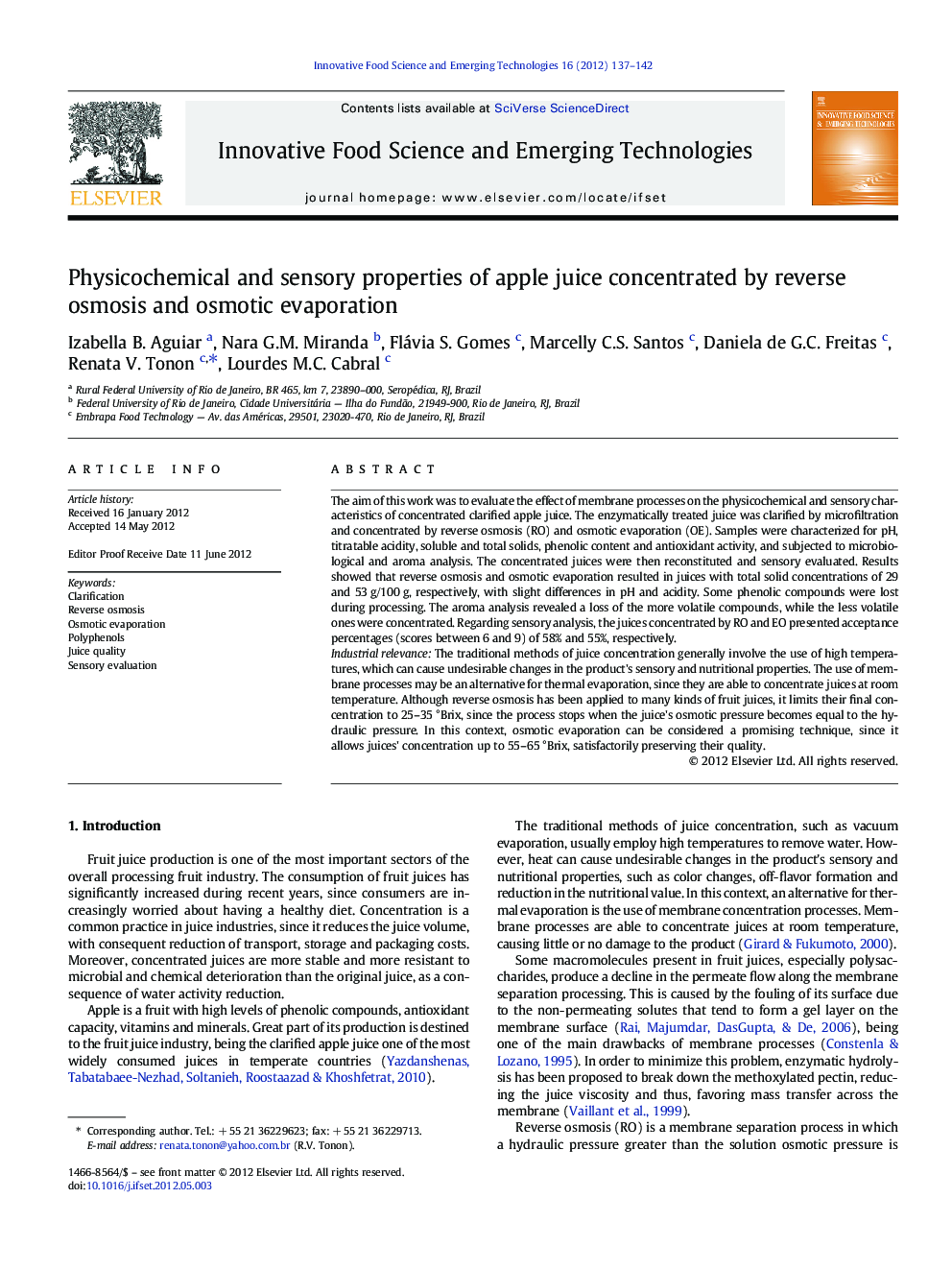| کد مقاله | کد نشریه | سال انتشار | مقاله انگلیسی | نسخه تمام متن |
|---|---|---|---|---|
| 2087150 | 1545550 | 2012 | 6 صفحه PDF | دانلود رایگان |

The aim of this work was to evaluate the effect of membrane processes on the physicochemical and sensory characteristics of concentrated clarified apple juice. The enzymatically treated juice was clarified by microfiltration and concentrated by reverse osmosis (RO) and osmotic evaporation (OE). Samples were characterized for pH, titratable acidity, soluble and total solids, phenolic content and antioxidant activity, and subjected to microbiological and aroma analysis. The concentrated juices were then reconstituted and sensory evaluated. Results showed that reverse osmosis and osmotic evaporation resulted in juices with total solid concentrations of 29 and 53 g/100 g, respectively, with slight differences in pH and acidity. Some phenolic compounds were lost during processing. The aroma analysis revealed a loss of the more volatile compounds, while the less volatile ones were concentrated. Regarding sensory analysis, the juices concentrated by RO and EO presented acceptance percentages (scores between 6 and 9) of 58% and 55%, respectively.Industrial relevanceThe traditional methods of juice concentration generally involve the use of high temperatures, which can cause undesirable changes in the product's sensory and nutritional properties. The use of membrane processes may be an alternative for thermal evaporation, since they are able to concentrate juices at room temperature. Although reverse osmosis has been applied to many kinds of fruit juices, it limits their final concentration to 25–35 °Brix, since the process stops when the juice's osmotic pressure becomes equal to the hydraulic pressure. In this context, osmotic evaporation can be considered a promising technique, since it allows juices' concentration up to 55–65 °Brix, satisfactorily preserving their quality.
► Clarified apple juice was concentrated by reverse osmosis and osmotic evaporation.
► The juice concentrated by osmotic evaporation achieved 53 °Brix.
► The phenolic content increased from 49.53 to 232.8 mg gallic acid/100 g.
► Some volatile compounds were lost during processing.
► Concentrated juices were relatively well accepted by consumers.
Journal: Innovative Food Science & Emerging Technologies - Volume 16, October 2012, Pages 137–142